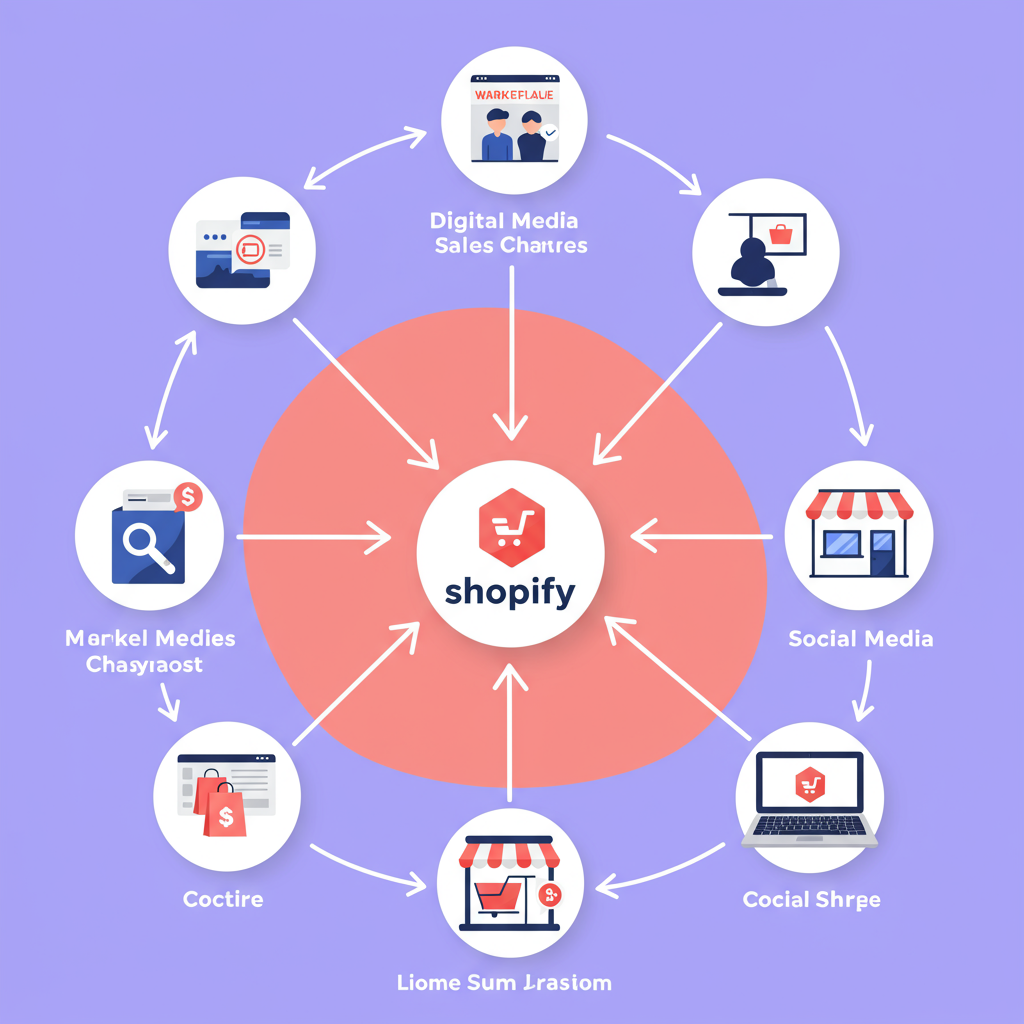How I’ve Expanded My Reach and Boosted Sales Beyond My Online Store
As a Shopify merchant, I’m constantly looking for innovative ways to grow my business and reach more customers.
One of the most transformative strategies I’ve implemented, and one I highly recommend, is multi-channel selling.
Simply put, multi-channel selling means offering your products across various platforms, not just your primary Shopify store.
It’s about being present wherever your potential customers are, whether they’re browsing a marketplace, scrolling through social media, or even shopping in person.
In today’s incredibly competitive e-commerce landscape, relying solely on a single sales channel can significantly limit your brand’s visibility and growth potential.
By strategically expanding our presence, we can tap into new customer segments and diversify our revenue streams.
This approach isn’t just about increasing sales; it’s about building a more resilient and adaptable business.
It reduces our dependence on any single platform, mitigating risks associated with algorithm changes or market shifts.
Ultimately, multi-channel selling has allowed me to significantly increase my brand’s reach, improve customer engagement, and drive substantial growth.
Your Shopify store, for me, remains the absolute core and central hub of my entire operation.
It’s where all my product data, inventory, customer information, and order processing are meticulously managed.
Shopify’s robust platform is designed to integrate seamlessly with various other sales channels, making multi-channel management surprisingly efficient.
Let’s explore some of the key channels I’ve leveraged and how Shopify helps me manage them.
First, there are online marketplaces. Giants like Amazon, eBay, Etsy, and Walmart Marketplace offer immediate access to millions of active shoppers.
These platforms are powerful because customers often visit them with a clear intent to purchase, providing a ready audience for our products.
Next, social media has evolved far beyond just sharing photos; platforms like Facebook, Instagram, TikTok, and Pinterest now offer direct shopping features.
Shoppable posts, product tags, and in-app checkout capabilities allow customers to discover and purchase products without ever leaving their favorite social app.
Don’t overlook the power of offline or physical sales channels. Pop-up shops, craft fairs, trade shows, or even a dedicated retail space can be incredibly effective.
This is where Shopify’s Point of Sale (POS) system becomes invaluable, allowing me to sync in-person sales and inventory directly with my online store.
For many businesses, including mine, wholesale or B2B selling is a significant growth area. Selling in bulk to other businesses opens up entirely new revenue streams.
Shopify Plus offers advanced B2B features, but even standard Shopify plans can be extended with apps to create dedicated wholesale portals.
The true beauty of Shopify lies in its ability to centralize the management of these diverse channels.
From a single Shopify admin dashboard, I can oversee inventory levels, process orders, and manage customer data across all my sales points.
Shopify’s extensive App Store provides a vast ecosystem of integrations for almost any channel you can imagine, from marketplace connectors to social selling tools.
One of the most critical aspects is inventory synchronization. Shopify helps me avoid overselling by automatically updating stock levels across all connected platforms.
All orders, regardless of their origin – be it Amazon, Instagram, or my physical store – flow directly into my Shopify admin for streamlined fulfillment.
This unified view of customer data also allows me to understand purchasing habits better and tailor my marketing efforts more effectively.
So, how do we approach multi-channel selling effectively? My advice is to start strategically and not try to be everywhere at once.
Identify the channels where your target audience spends their time and where your products are most likely to resonate.
Maintain consistent branding, messaging, and, where appropriate, pricing across all your channels to build a cohesive brand identity.
Optimize your product listings for each specific channel’s requirements, understanding that what works on Instagram might differ from Amazon.
Streamline your fulfillment process to efficiently handle orders coming in from multiple sources, ensuring timely delivery and customer satisfaction.
Provide consistent, excellent customer service, regardless of how the customer found you or which channel they used to make their purchase.
While incredibly powerful, multi-channel selling isn’t without its challenges, and I’ve certainly encountered a few.
Maintaining perfect inventory synchronization across many platforms can be tricky, requiring careful setup and ongoing monitoring.
Managing different platform rules, fees, and advertising strategies adds layers of complexity to the operation.
Consolidating customer data for comprehensive marketing insights can also be a hurdle if not properly integrated.
Fortunately, Shopify and its robust app ecosystem offer powerful tools and solutions to mitigate many of these potential issues.
I’ve found that the benefits of reaching a wider audience and diversifying revenue streams far outweigh the initial complexities when done correctly.
It’s about creating a seamless and convenient shopping experience for your customers, no matter where they choose to engage with your brand.
Multi-channel selling is no longer just an option for growth; I believe it’s a fundamental necessity for any serious Shopify merchant.
It empowers us to expand our reach, diversify our revenue, and build a stronger, more resilient brand in an ever-evolving market.
Embrace the power of multi-channel selling, and I’m confident you’ll see your Shopify business thrive.
What do you think about this article? Are there any multi-channel strategies you’ve found particularly effective for your Shopify store?






